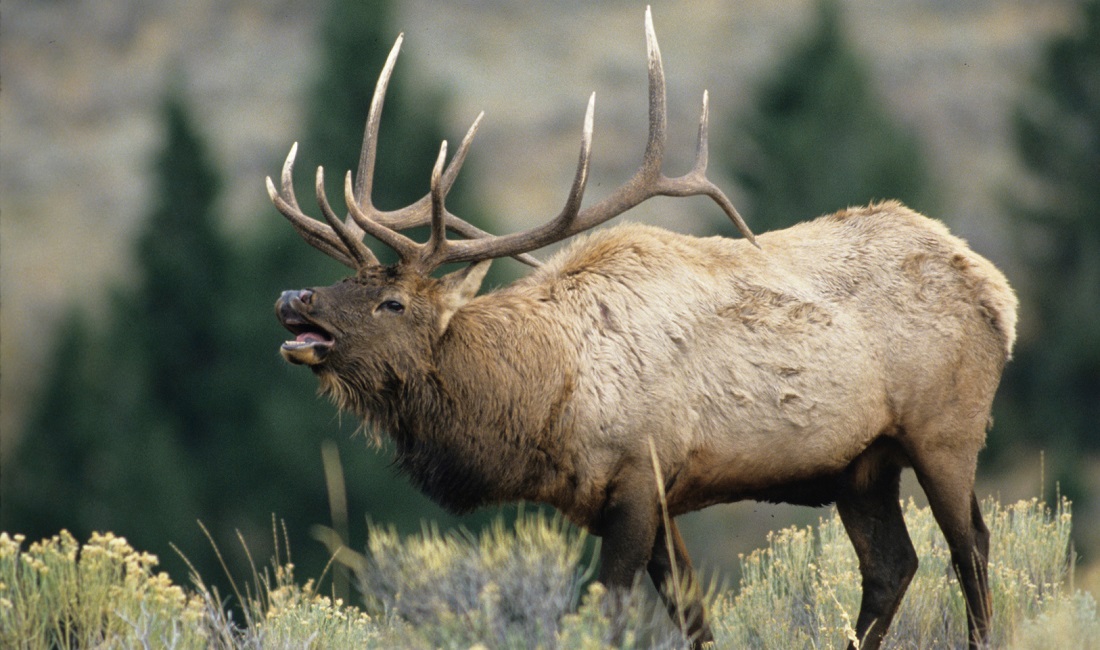We recently received this question: “I was wondering what could cause Rocky Mountain Elk to lose fur/hair and have reddish patches in the area.”
Here is the answer from Rocky Mountain Elk Foundation Director of Science and Planning Tom Toman:There are several reasons for elk to lose hair but the first is the normal process of pelage molt. After the winter period, the hair starts to fall out, often in large patches. While the hair served the purpose of protecting the animal from the cold temperatures, it is important to get rid of that insulation before the summer temperatures arrive. The new hair is already growing underneath but is short shiny and often a reddish color rather than tan or brown.Elk show patchy hair growth on their necks due to ticks
(Courtesy Canadian Wildlife Health Cooperative)“The only other reason I can think of for the reddish patches would be if the animal had an external parasite. For example a tick that is commonly referred to as the winter tick or moose tick (Dermacentor albipictus) can be found on elk, deer and other wild ungulates as well. In the spring the ticks are drawing a lot of blood from the host animal and the area of infestation starts to itch. We often see moose or elk scratching their necks with their hind feet and in doing so often scratch so hard that they shave the hair off the site and sometimes the area show up pink or red due to the irritation, but often the red comes from the tick being crushed and the blood that they were feeding on being released.
“I worked for Wyoming Game and Fish and was in Jackson Hole for 20 years. During late winter and early spring, we often found blood in the snow where a moose laid down for the night. We got several reports that someone had shot the moose with a 22 caliber rifle, a pellet or BB gun. When we checked it out, it was merely blood that the winter tick had drawn and was released by the tick when the moose laid down on it and it popped. A website in Canada gives a bit more info about the tick. The best habitat for a tick on an elk or moose is under the long neck hair which keeps the ticks warm and also where the blood is fairly close to the surface but they can be found over the entire body. There can be hundreds, thousands or in one case in Jackson Hole, a tick expert from Alberta, Dr. Bill Samuels, found more than a million ticks on a moose that had been killed by a car!”
